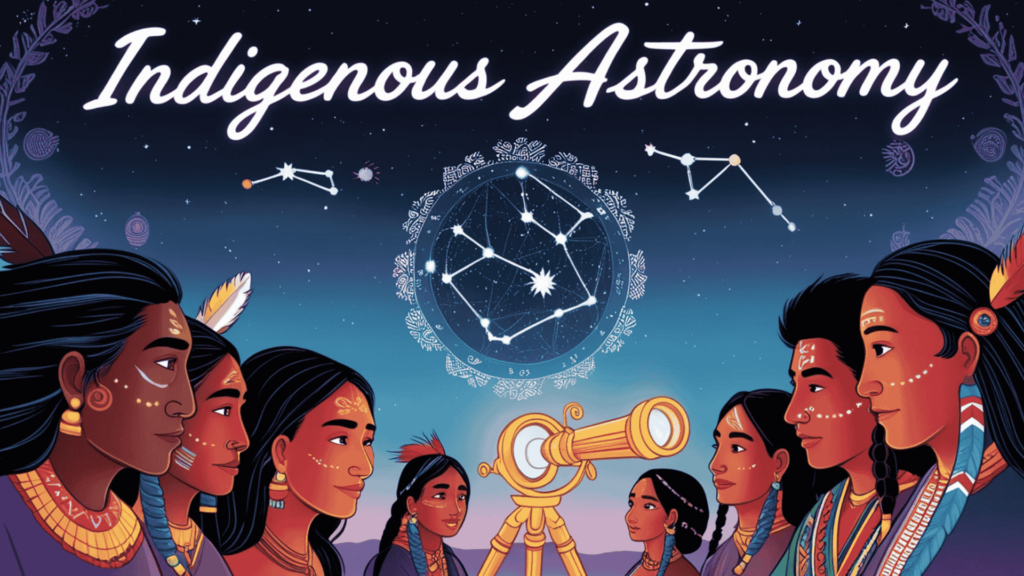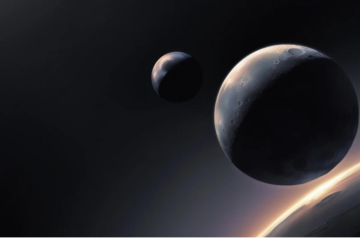Hello everyone, how are you supporters of the night sky? Have you ever thought of how different cultures perceive and comprehend the sky at night? The stars have served as a reference for incorporation in the cultures, histories, and practices of indigenous people from different parts of the world for thousands of years.
It is different from modern astronomy, which deals with scientific observations only in that it can only be understood with the practice and belief systems of the people and their interactions with the environment. In this blog, we will look at the place of stars, the moon, and other celestial bodies in the daily living of the indigenous peoples and the ways in which those practices still exist in modern times.
Let’s dive in!
Indigenous Astronomy How the Sky Shapes Cultural Traditions
What is Indigenous Astronomy?

Indigenous astronomy is the study of the different ways that indigenous societies around the world make sense of the sky and incorporate it into their lives. For such societies, the sky is not simply an array of objects far away—it is a living diagram with the patterns of the planet, sequences of events, and periods of the year all illustrated on it.
Most indigenous cultures have carried orally sophisticated systematized knowledge of the stars and other celestial bodies like the moon and the planets for years. This knowledge is not just about the projection of planets in the sky. It is part and parcel of their way of life and spiritual customs. Ethnic groups look at the sky to know when it is right to plant, carry out certain rituals, or even walk across vast areas. This is why these cultures have been able to live in different places, ranging from the Arctic to the Australian outback over the years.
The Sky as a Calendar
One of the most popular methods of relating to the stars and other celestial bodies is understanding a calendar. People frequently depend on the alignment of specific stars and their movement within the Moon and the sun spheres to count days and announce specific periods in the planting and ceremonial seasons.
For example, in various traditions, some stars are visible or hidden at particular times of the year, and this is associated with the commemoration of certain activities. For instance, the native Australians understood that when the Pleiades appeared above the horizon, it was winter, and they would look for certain game or food.
In the same way as patterns of the stars, other native tribes used seasonal analogous stars in order to get adjusted to the time of the year suitable for farming or hunting.
Indeed, the phases of the Moon might be an important component of such a cultural calendar, too. For example, in many native cultures, such as the Inuit in the Arctic and Maori in New Zealand, the Indian central population also uses lunar months. Mostly, the other manifestations of the full Moon, as well as the gatherings of kin or clans or events such as weddings, take place then.
Navigating by the Stars
In several Indigenous languages, the skies remind people of a compass bearing. Way before the GPS was invented, this group of people were great explorers. They could go distances without the help of the sun or anything in nature around them. They were most especially those who sailed, like the Polynesians, who would find their way in the open seas by following patterns of stars.
Polynesians mastered navigation through the use of stars in a remarkable way by utilizing some of those decorative patterns in the sky, especially stars, to navigate their boats for hundreds of miles. They understood how the stars would rise and set regardless of where they would be and thus managed to travel with great accuracy.
This was done for every star as the sailors carefully remembered the entire pattern and gradually edged toward the tropics. The training was intense and involved learning the so-called star paths or navigation by the heavenly bodies – a system of navigation known in many other cultures and practiced here.
In a similar manner, Aboriginal Australians went about mapping the extensive arid regions and forests in tunes of constellations. Most of their star maps were in the form of stories and songs, which were referred to as song lines. These song lines explained the life’s travels of a spirit and also functioned as a guide on how to find water, shelter, and food.
Stories in the Stars The Role of Mythology
Indigenous people created astronomies of their own with interesting stories and legends to support the movement of the stars, moon, and sun. Most of these tales are centered on the interdependence of the land, the sky, and the people.
The stars, for most indigenous societies, are not just objects existing in space but also represent living beings, usually ancestors or gods, who are in charge of the earth and its people.
In Australian Aboriginal astronomy, for instance, The Milky Way is regarded as a river in the sky, while other sets of stars are seen as totems of animals and spirits that determine how people conduct their activities. Such is the case of the ‘Emu in the Sky’, which is a picture commonly found in Aboriginal tales of the enormous bird that can neither fly nor swim.
Known for its importance in cultural and spiritual grounds, the image lately has been attached to dust clouds in the Milky Way, which form a dark pattern. Additionally, different movements of the Emu in the sky also indicate appropriate seasonal activities to be carried out, which in this case is emus egg collection.
The Connection Between Sky and Land
It is apparent in the way that the Indigenous culture views the sky and connections made to the land that there is no dividing line between the two. They are parts of a whole where the interconnection people have with the earth transcends all the boundaries set. This view of the universe that is inclusive of both the sky and land is a common aspect in traditional knowledge systems, where every aspect is perceived to fit in each other and nothing goes without the other.
For example, many Indigenous groups contend that some astronomical occurrences, such as an eclipse or other cosmic phenomena like the rise and fall of planets and comets, among others, have practical implications for life on earth. Given the changing geophysical conditions of the earth, such occurrences are also deemed timely and, therefore, understood as ceremonial matters of the gods.
Indigenous peoples have sometimes known how to connect the dots and explain phenomena like the weather, which informs the time by predicting the coming summer. Looking at the stars and the Moon, these people know about the environment changing so that they get ready for when the animals, the weather, or the vegetation change.
Modern Revitalization of Indigenous Astronomy

The last few years have seen an increase in enthusiasm about Indigenous astronomy, both among the Indigenous peoples and the scientific world. Work is being done to enhance such ancient knowledge systems, which have no or very little place in Western-driven science.
Many Indigenous populations are striving to enhance their Astronomy practices, teaching the younger members of their societies the importance of these cultures and the role played by the heavens in their past. This is done via ongoing courses, community outreach, stargazing events and campaigns, and incorporating traditional knowledge into current scientific arguments.
For instance, in Australia, there is an emerging recognition of Aboriginal astronomy as a component of the nation’s scientific accomplishments and cultural heritage. Old astronomers and elders have been teaching some of the native sky lore to astronomers with astonishing results in terms of ancient astronomy and modern cosmology as well.
Conclusion
The understanding of the night sky by Indigenous peoples is culturally, spiritually, and practically oriented. The stars, for the Indigenous people, are not merely objects studied scientifically, but they are ‘alive’ and serve as guides, protectors, and slopes connecting them with the Earth as well as their forefathers.
These traditions, which are already very old, still evoke reverence and admiration for the natural environment and its resources, as it were, forging a link between heaven and Earth.
So the next time when you gaze up at the stars, consider how they have influenced and continue to influence the course of history and the various narratives of people. How does the sky affect your perspective about yourself and the world?
FAQ
- What does Indigenous astronomy entail?
Indigenous astronomy refers to the understanding and application of the night sky by Indigenous groups in areas such as navigation, agriculture, and tradition.
- How do Indigenous peoples relate to the stars, in particular?
The stars can determine the seasons, time, and cultivation of crops, as well as guidance while on a journey.
- What function do narratives serve in relation to Indigenous astronomy?
Cultural stories give significance to certain stars and celestial phenomena through individual storytelling customs.
- Is learning about Indigenous astronomy accessible to everyone?
Absolutely! Indigenous astronomy is within everyone’s reach since there are materials available for reading, organized workshops, and contact with Indigenous people to learn their customs.
- What is the relevance of Indigenous astronomy in the present time?
Indigenous astronomy is significant because such knowledge aids in safeguarding one’s cultural heritage, encourages individuals to appreciate the environment, and provides essential knowledge on how to live and take care of the planet.





